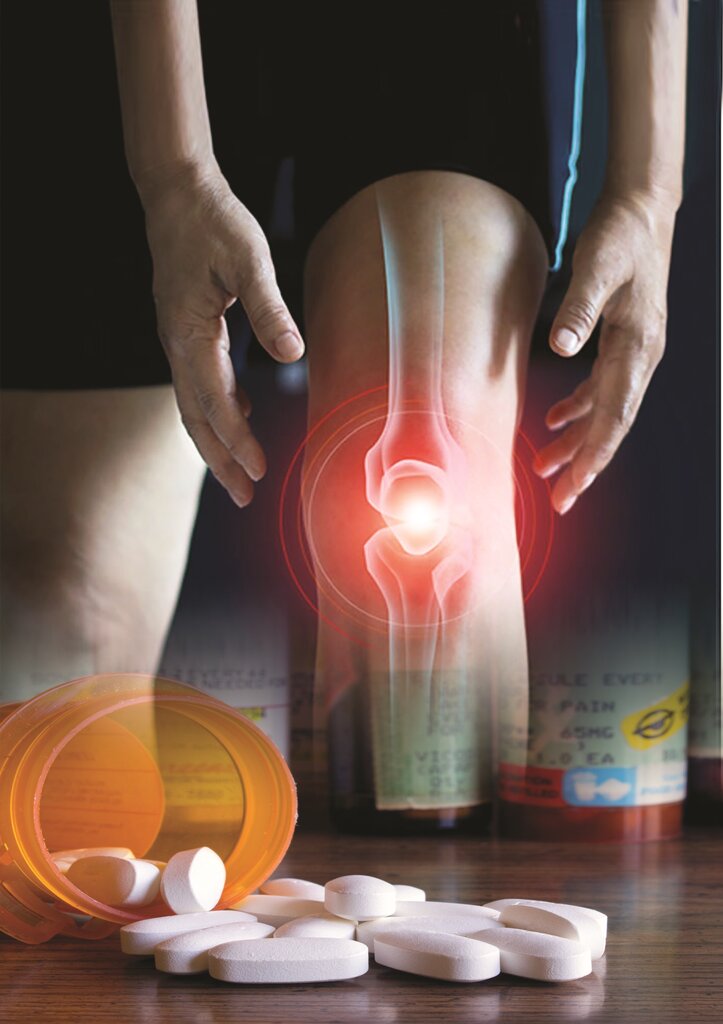
Current literature on postoperative pain has shown that multimodal pain treatment options can be an alternative to opioids after total joint replacement surgery. These regimens can provide comparable analgesia, without the well-known consequences of opioid reliance (J Arthroplasty 2017;32[9S]:S69- S73; Best Pract Res Clin Anaesthesiol 2019;33[1]:111-123).
Over the past several years, orthopedic surgeons, pain management physicians, and nurses at Englewood Health have diligently worked together to reduce opioid reliance following total joint arthroplasty.
As an example, the orthopedic surgeon will place a long-acting numbing agent, usually bupivacaine, into the surgical site toward the end of surgery. The anesthesiology team will also typically inject one or two nerve blocks before and after surgery that last from 24 to 72 hours, which relieve postsurgical pain without decreasing mobility of the muscle or joint.
“Such a strategy has been found to have better patient outcomes,” said Vinnidhy Dave, DO, director of palliative medicine for the Englewood Health Physician Network. “When patients require more opioids during surgery, they tend to have more side effects, such as constipation, nausea, and higher risk for falls. The recovery process also takes longer.”
“We know that when patients have expectations set and are given more information, there is definitely a significant decrease in anxiety after the surgery, in part because they know how much pain to expect. We really want to improve patient satisfaction and outcomes.”
Vinnidhy Dave, DO, director of palliative medicine
Multimodal pain regimens increase the number of nonopioids prescribed in an attempt to reduce pain while minimizing the need for opioids. After surgery, patients are given acetaminophen 24 hours a day.
“There is significant literature showing that when patients take acetaminophen around the clock after joint replacement, the requirement for opioids decreases [JAMA 2019;321[6]:562-571],” Dr. Dave said.
Patients may also be prescribed a nonsteroidal anti-inflammatory drug, such as celecoxib, and the nerve pain agent gabapentin to further reduce pain (BMJ Open 2020;10[1]:e030501; Pain Med 2020;21[1]:161-170).
Starting physical therapy and increasing activity as soon as possible result in less pain overall (Physiotherapy 2018;104[1]:25-35). “Our physical therapists become involved very early to get patients up and moving,” Dr. Dave said. However, if pain persists, a low-dose opioid will be prescribed.
Over the past year, Englewood Health has stopped dispensing long-acting opioids for total joint arthroplasty, without a change in patient outcomes. “This has resulted in at least a 30% to 40% reduction in opioid usage,” Dr. Dave explained.
“It used to be that after surgery, patients would be given a full month’s supply of opioids, but research recently has shown that if you send patients home with less opioids, they usually do not ask for refills.”
For the past six months, Englewood orthopedists have been giving patients a five-day supply of opioids to take home with them, plus a reduction of daily tablets from between six and eight to between four and six. “We are trying to reach that balance of patients having enough pain medication at home without needing to call frequently for extra medication,” Dr. Dave said.
Prior to surgery, patients also enroll in a roughly one-hour educational seminar at the hospital called Joint University, where they learn about joint replacement surgery and recovery. The seminar, which is conducted by a pain nurse and a surgical nurse, reviews what to expect from the procedure, including postoperative pain management. Most patients welcome the use of multiple analgesic agents and physical therapy to try to minimize abusable narcotics.
“The class is to relieve anxiety and answer questions,” Dr. Dave said. “We know that when patients have expectations set and are given more information, there is definitely a significant decrease in anxiety after the surgery, in part because they know how much pain to expect. We really want to improve patient satisfaction and outcomes.”
Posted on January 5, 2021


